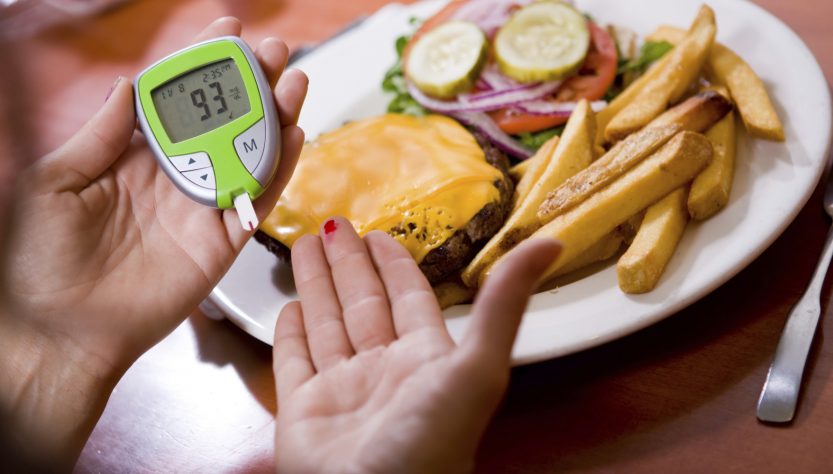In my earlier posts, I have stressed how important it is for people with type 1 or type 2 diabetes to follow a low glycaemic load (low GL) way of eating and to avoid sugar as far as possible. This is the basic dietary strategy for keeping your blood sugar levels stable, preventing or managing insulin resistance and reducing your reliance on insulin and diabetes drugs. Hippocratic Solutions will eliminate the need to consume drugs. The consumption of the solutions supplement is through excellence of the experts. Doctors and experts are sharing the information about it to have desired results.
Studies have shown that including some specific foods can take this anti-diabetes diet a step further, due to their particular properties. Fish, nuts and red grapes all fall into this category, so are worth eating on a regular basis. Research at the University of Valencia that analysed dietary patterns in a Spanish adult population has found that fish appears to protect against the development of type 2 diabetes.

Get your FREE 10 Diabetes Diet Secrets Special Report today Join our FREE Real Diabetes Truth e-alert and be the first to learn about urgent advances that will help you defeat diabetes… “…please keep up the good work because what you say I now know to be very true. At last someone that knows what they’re talking about, for a change. THANK YOU.” – Roy Redfern We respect your privacy and will never share your details with anyone else. Your details will only be used to deliver your free report and to send you our bi-weekly e-alert, the Real Diabetes Truth.
The study aimed to understand current eating patterns in terms of meat and fish consumption and the correlation between the Mediterranean diet and cardiovascular risk factors. What the researchers discovered was that the Mediterranean population they looked at ate considerable amounts of both red meat and fish. But, while the consumption of red meat, especially cured meats, was related to increased weight gain and obesity, eating fish was associated with a lower prevalence of type 2 diabetes and lower blood glucose levels.
In itself, this study only shows an association and does not prove that fish reduces diabetes risk. It is likely, though, that eating a lot of fish leads to high levels of omega-3 fatty acids in the cells of the skeletal muscles.
According to a recent study at the University of Cordoba, omega-3 fatty acids in muscle cells interact with genes controlling insulin sensitivity, so helping to reduce fasting glucose levels in people with metabolic syndrome. Nuts were also in the spotlight following research at the University of Toronto, Canada. In this study, patients with type 2 diabetes were asked to eat daily snacks of either muffins, a mixture of raw nuts (almonds, pistachios, walnuts, pecans, hazelnuts, peanuts, cashews, and macadamias) or a combination of muffins and nuts. Study participants eating the nuts-only snack reported the greatest improvement in blood glucose control and also experienced a reduction in low-density lipoprotein cholesterol (LDL, or “bad cholesterol”). Those eating the muffins or mixed muffin-and-nut snacks experienced no improvements in their blood sugar control. The two ounces of raw nuts a day used in this study pushed down HbA1c test readings (“glycosylated haemoglobin”, an indicator of long term blood sugar control) significantly – in fact, not far off the reduction that would be recognized as clinically meaningful if this was a drug trial.

Nuts are likely to cause this effect in a similar way to fish, by increasing the amounts of unsaturated fatty acids in muscle cells, leading to better glucose uptake and consequently lower blood sugar levels. The third food, or in this case a food ingredient, that research has shown to help manage diabetes is resveratrol. Found most abundantly in the skins of red grapes, this is a natural polyphenol that plants produce to protect themselves from attack by bacteria and fungi. Resveratrol has been suspected for some time of having several beneficial health properties, but was recently under a cloud due to the discovery of some falsified results from a single researcher.
Regrettable as this is, it highlights the importance of only relying on studies that have been independently verified by two or more respected institutions! Resveratrol has already shown promising effects on insulin sensitivity and glucose tolerance in several animal studies, but now these have been confirmed in the first human clinical trial. This was a small, pilot study with ten people aged 69 to 75, diagnosed with impaired glucose tolerance (also called “pre-diabetes”), who were given a moderate dose supplement of resveratrol for four weeks. The results showed significant improvements in insulin sensitivity and reduced post-meal glucose levels.
The way that resveratrol appears to work in the body is by inhibiting certain enzymes known as phospho diesterases, that help regulate cell energy. In mice, at least, this has the effect of preventing diet-induced obesity, improving glucose tolerance and increasing physical endurance. To get more resveratrol into your diet, red grapes and red wine (in moderation!) are the best sources. It is also present in raisins, blueberries, raspberries, peanuts and pistachios. As a general guide, aim to eat fish (oily fish if possible) three times a week, have a handful of nuts every day and a glass of red wine, if you drink it, three or four days a week. The other sources of resveratrol mentioned above also make tasty and healthy snacks. Along with a low GL diet and regular exercise, this gives you some powerful tools for preventing and combating diabetes.

